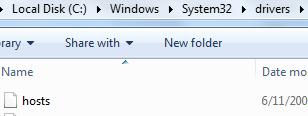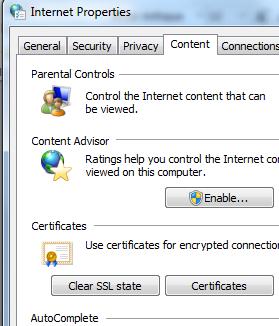If you have been using Chrome for some time, you might have encountered errors such as: the Err_Ssl_Protocol_Error message or This site can’t provide a secure connection.
These are common SSL errors, which thankfully are not very difficult to resolve. However, one frustrating aspect of SSL error is that it’s not always easy to pinpoint the exact cause.
We recommend you give these solutions a try if you are up against the aforementioned error. You don’t have to try all the given solutions; instead start with the first one in the list and work your way down until you are able to resolve the issue for good.
Solution One – Check your system date and time
If your computer’s clock is set to the wrong date and time, you will experience problems while accessing secure websites and Chrome will throw an error message. The easiest solution is checking the time and data shown at the bottom right corner of the taskbar. If you see the date and time displayed are incorrect, you need to set the clock and date to show the right time. Here are the steps to change the date and time.
- Click the clock in the taskbar
- In the pop-up, click Change date and time settings
- In the Date and time window, click Change date and time
- Set the right date and time and click OK
Solution Two- Check the firewall settings
Many times you may accidentally block a website through the firewall. If the site is entered in the block list, you will get the Err_Ssl_Protocol_Error message. Here are the steps to check your firewall settings
- Click Start – > Control Panel
- Click System and Security
- Click Windows firewall
- On the left side of the Windows Firewall panel, click Allow a program or feature through Windows Firewall. The Allowed Programs panel will appear.
- Select Google Chrome and click Change Settings
- Make sure Google Chrome is allowed to access websites on Private and Public networks. Both boxes should be ticked.
Solution Three – Disable QUIC protocol
QUIC stands for Quick UDP Internet Connections. It provides a TLS/SSL equivalent connection to Google’s servers. QUIC is enabled by default in Chrome. Many users were able to resolve the error by disabling QUIC. Here are the steps to disable it.
- Launch Chrome
- Copy chrome: //flags/#enable-quic and paste it into the address bars and hit enter.
- Go to the first entry Experimental QUIC protocol and select Disabled from the drop-down list
- Restart Chrome
Solution Four – Clear SSL state
The Secure Sockets Layer manages secure connections to the web. The proofs of identities called “Certificates” get stored in your computer’s memory until you clear the SSL state. Here are the steps to clear the SSL state
- Open Google Chrome and click the three dots you see just below the X (close) button.
- Next click on Settings.
- Scroll down the page and open Advanced Settings.
- Search for proxy settings in the search bar or scroll down to find it
- A window named ‘Internet Properties’ will open up.
- Go to the Content window and click on the Clear SSL State Button.
Solution Five – Remove system hosts file
The system hosts file is one of the crucial system resources that address network nodes in a computer network. It is also an important part of the operating system’s IP implementation. The system hosts file might be affected which is causing Err_Ssl_Protocol_Error. Removing it can help resolve the error. Here are the steps to follow.
- Press the Windows logo key and R simultaneously on the keyboard. It will bring up the Run command
- In the Run command box, type C:\Windows\System32\drivers\etc and hit Enter on the keyboard

- Right-click hosts and select Delete

Restart your Chrome to see if you the issue is resolved.



Leave a Reply